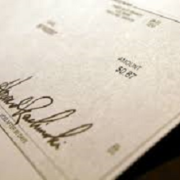The Inside Scoop on Donor Advised Funds
Looking for a different way to donate to your favorite charity? Many investors are finding that donor advised funds are a creative way to contribute dollars while still receiving a tax deduction for their efforts. The Donor Advised Fund (DAF) is a charitable vehicle created at a public 501(c)3 organization, which is called a sponsoring organization. Each account is composed of contributions made by individual donors who receive an immediate tax benefit while recommending grants from the fund to charities of their choice over time. Instead of making a one-time contribution to your favorite charity, contributors of donor advised funds can either set up their own private fund or use an established DAF and then direct how the contributions are distributed.
A Little DAF History
Donor advised funds aren’t new; rather they originated in the 1930’s. It wasn’t until 1969 that congress established a legal structure for them. Thirty years later, DAFs took off increasing in popularity and today the funds account for “more than 3 percent of all charitable giving in the United States.” In fact, Fidelity Investment’s Charitable Gift Fund surpassed the United Way as the largest recipient of charitable funds in the country. According to author Helene Olin in Atlantic Monthly, “Donors put $23.27 billion in Donor Advised Funds in 2016, a 7 percent increase since 2015 and 18 percent since 2014.”
How it works:
- Contributions are placed into the fund.
- Immediate tax deductions are received by the taxpayer for the amount they have ‘donated’ into the fund.
- Administration of the DAF including investments (in the stock market) is ongoing.
- Either immediately or at some point in the future, the taxpayer makes grants to qualified charities of his/her choice from the fund.
Once the money is in the fund, the dollars cannot be returned to the donor and become the property of the ‘fund’. The underlying issue for nonprofits is the inherent delay between taxpayer donations to the fund and their eventual distribution to the nonprofit. Appreciative recipient nonprofit organizations argue that because the funds don’t have to be released on any set time horizon, it is very difficult to determine or plan for the contributions. Additionally, because the funds are anonymous, donors can elect to remain in secret making it harder for nonprofits to thank donors and cultivate new supporters. While these are legitimate frustrations for the nonprofits, reports say that donors under age 50 are gravitating more frequently to the Donor Advised Funds. To survive with the next generation of donors, nonprofits are going to have to find a way to work with these funds and find more creative ways to market to donors and receive the funds.
Who can set up a donor advised fund?
The good news is that donor advised funds are not just for the wealthy. For funds like Charles Schwab’s Charitable fund, anyone can start a fund with as little as $5,000 in irrevocable funds and add additional contributions, if any, of as little as $500. Donors can also control how and when the funds are distributed. Funds can remain in the fund in perpetuity. Unlike charitable foundations, that must by law allocate 5 percent of their dollars annually, DAFs are not bound by the same distribution rules. For the more affluent investor, supervised, or ‘administered’ funds can be started with a minimum of $250,000 or more and select an individual investment advisor to manage the fund. Of course, administrative and investment fees vary based on the type of account under management.
If you have questions about how to start a donor advised fund or financial investment strategies, talk with a PASBA Small Business Advisor.
PASBA member accountants bring the collective resources of a nationwide network of Certified Public Accountants, Public Accountants, Enrolled Agents and other practitioners available to answer your tax and financial questions and streamline your business accounting, bookkeeping, and payroll operations.
To find a trusted accountant in your area, visit www.SmallBizAccountants.com.
Please be advised that, based on current IRS rules and standards, any advice contained herein is not intended to be used, nor can it be used, for the avoidance of any tax penalty that the IRS may assess related to this matter. Any information contained in this article, whether viewed or subsequently printed, cannot be relied upon as qualified tax and accounting advice. Any information contained in this article does not fall under the guidelines of IRS Circular 230.



